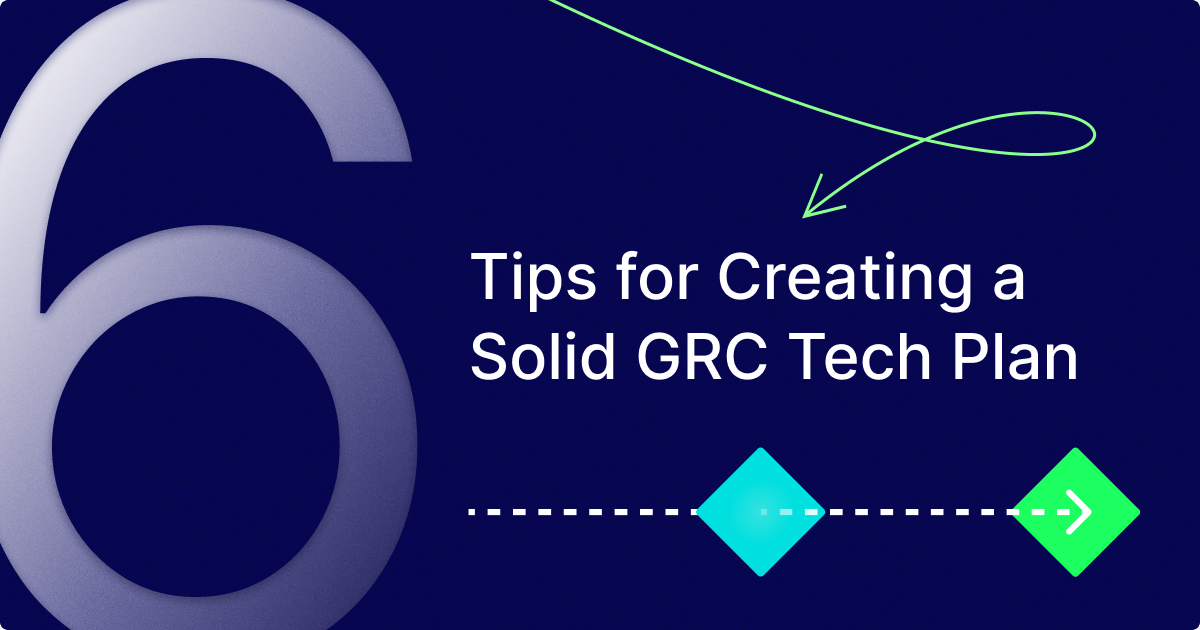Whether they’re large, small, or somewhere in between, organizations and the systems that power them are complex. Their digital infrastructures have too many endpoints to protect without automation, and its nearly impossible to handle governance, risk, and compliance (GRC) effectively or efficiently using manual methods. This is why so many businesses are now relying on technology to manage GRC at scale.
But technology isn’t a solution in and of itself. The technology you select—and how you use it—has a tremendous impact on GRC outcomes. To make the most of your GRC technology, you need a solid strategy backing it up. This guide will help you and your team create a strong GRC technology plan as the backbone of your risk management and compliance efforts.
1. Assess the state of your current GRC efforts
Before selecting a GRC platform, you need to assess your current GRC roadmap. What framework are you following? Does it have any gaps?
The goal is to choose GRC technology that removes those blind spots, but you can’t do that without first identifying where the gaps exist. For example, if a team is repeatedly dropping the ball when passing GRC tasks between departments, that’s a pain point that your GRC technology should be able to solve.
Knowing where things are breaking down in your process ensures that you’ll keep those trouble spots front-of-mind as you evaluate GRC tech solutions, and help you pick one that fixes real problems facing your business.
2. Define what success looks like
You shouldn’t invest in new GRC technology without first establishing KPIs for measuring whether the technology you choose is actually helping you achieve what you hoped it would: enhancing the security of your data and assets. Otherwise, you have no way of knowing if this significant change and investment was worth the effort.
Take the time to set these goals, and verify that the GRC technology you pick will be able to meet all of them. You can also form a GRC committee to regularly review these metrics and ensure the tech meets your goals, or determine whether they need to be revised. If your current tech keeps coming up short, you need to reevaluate its role in your GRC processes.
3. Customize your tech to match your processes
Sometimes, technology platforms pigeonhole you into working a certain way. That’s usually for a good reason, but occasionally, organizations might need to customize their GRC platform to their unique needs.
If you can make the GRC platform fit your current processes, you won’t have to change your team’s workflow as much to accommodate the new technology. If your employees are set in their ways, this is a smart way to encourage adherence. The process won’t change as much, but the tech backing up the process makes it more efficient, which your employees will love.
4. But know when to stop customizing
Of course, you can certainly customize too much. It’s alright to tweak the technology and allow for some personalization — after all, every organization is different. But if you want a completely customizable option, you’ll be hard-pressed to find it.
You’ll see better time to value if you use the GRC tech as it was intended to be used. It was designed that way for a reason. Obsessing over customization can delay time to value, so as long as the technology is “good enough,” it’s good enough.
5. Conduct change management
If you’re moving away from manual processes and embracing modern GRC technology, you’re inevitably going to hit a few bumps in the road—particularly when it’s time to get people to actually start using your new system. You should prime your team for this change in advance to minimize growing pains.
Implement change management to help your team switch away from your old processes and embrace a new way of doing things. Be as transparent and helpful as possible so employees—especially those down the chain—know that the GRC technology is intended to make their lives easier and they don’t feel blindsided by it. Create a communication plan with your marketing or HR team and execute it over a period of several months to encourage technology adoption and process adherence.
6. Start small
Some organizations want to go all-in on GRC technology and roll it out for every department. Implementing any new technology-backed process will come with hiccups, and you don’t want to experience the same issues across all your departments simultaneously.
That’s why it’s best to start small first. Pick one process or one department to implement GRC tech first. This will allow you to learn and gather feedback from your team, like a beta test, without throwing the entire company into chaos. Iron out any issues on a smaller scale before rolling out the GRC tech company-wide. This way, you’ll already have a streamlined process ready when it’s time to scale.
It All Starts With the Right GRC Technology
Don’t silo GRC into spreadsheets, emails, or binders. Move your GRC processes into a solid GRC technology platform that has your back. This can help you better manage risk, but you need a plan for how you’ll manage your GRC tech internally. Following our six tips can create a GRC tech plan that works for your business.
LogicGate Risk Cloud is purpose-built for helping you implement your risk management program. Our all-in-one GRC solution allows you to manage risk at scale — automatically. Take us for a test drive: Request a demo.
